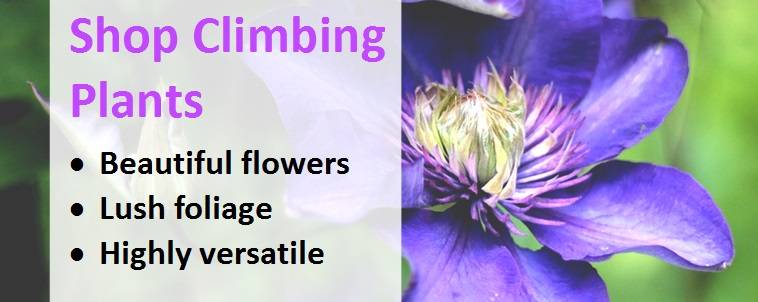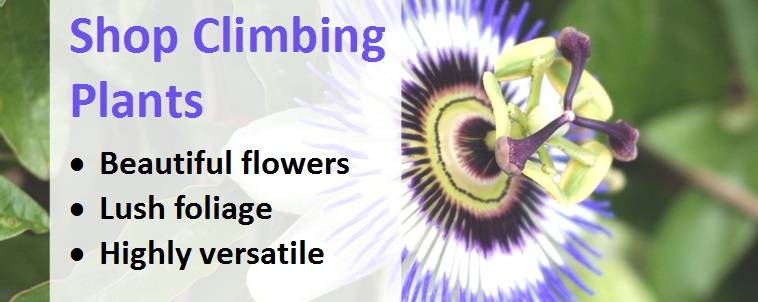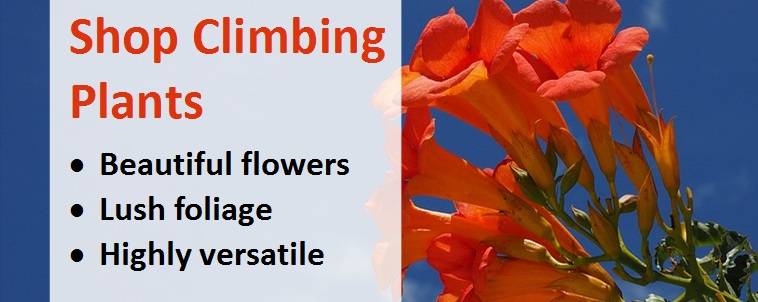Check Here Before Buying – Pot Size Matters...Not all websites offer the same. Plants in a 2-litre pot have twice the root system of a P9 or 1 litre pot.
How to choose a climbing plant
Climbers are highly versatile plants producing beautiful flowers and lush foliage with a natural tendency to climb, scramble or ramble. They're perfect for covering unsightly walls and fences; adding height and colour when grown through arches or pergolas; clambering through mature shrubs or trees to add an extra season of interest; or just making efficient use of floor space in smaller gardens and balconies. Some climbers twine around their supporting framework, whereas others such as Ivy and Campsis actually self-cling to the climbing surface. Many climbers are also excellent wildlife attracting plants, whilst Hedera varieties such as Hedera Hibernica are perfect groundcover plants and Hedera Helix is suitable for growing in a container.
Choosing a climbing plant
1) Climbing Habit - Self Clinging vs. Twining Climbers vs. Wall Shrubs
- There are two main types of true climbing plants - self-clinging and twining varieties.
- Self-clinging climbers naturally adhere to the climbing surface using aerial roots or adhesive pads. Ivy (Hedera), Hydrangea Petiolaris and Campsis have aerial roots, whilst varieties such as Virginia Creeper have adhesive pads along the stems. These climbers will cling to walls or woodwork without the need for a full support structure such as wires or a trellis.
- Twining climbers such as Honeysuckle, Clematis, Jasmine and Wisteria grow by wrapping themselves around poles, wires or trellis. They need a framework to wind around and climb up.
- Some bushes can also be trained as 'wall shrubs' to achieve the same effect but they will need to be tied into a support and trained upwards.
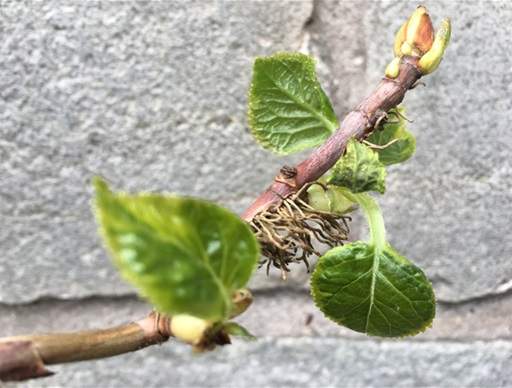
Aerial roots on a self-clinging climber
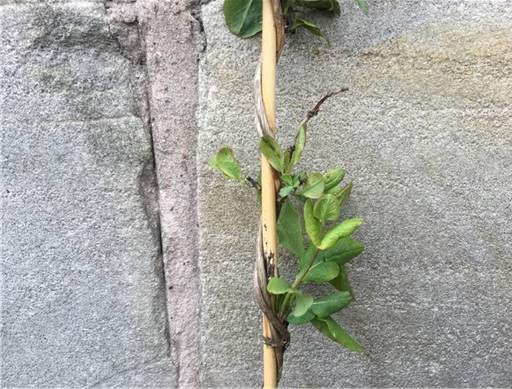
Twisting stems of a twining climber
2) Aspect
- If you're growing a climber against a wall or fence, establish whether it is north, south, east or west facing. This will dictate how much sunlight your plant will receive and whether it's likely to be warmer or cooler.
- The sun rises in the east and sets in the west, meaning north facing walls receive the least sun, making them cooler, shaded places. This generally represents less than ideal growing conditions but there are still plenty of climbers that are suitable - see below.
- East facing walls will receive some sunlight in the morning as the sun rises but will then be cast into shadow for the afternoon. The early morning sun can cause damage to frozen buds and leaves, as the rapid thawing causes them to turn brown and wither, with evergreens being particularly vulnerable.
- South and west-facing walls receive sunlight throughout the day, making them warmer and brighter. South-facing walls in particular absorb the sun's heat throughout the day, emitting it through the night, making south-facing sites perfect for less hardy climbers and wall shrubs. Fruit trees can also be trained as espaliers, cordons or fans against a south-facing wall to act as a fruiting climber and save space in the fruit and veg garden.
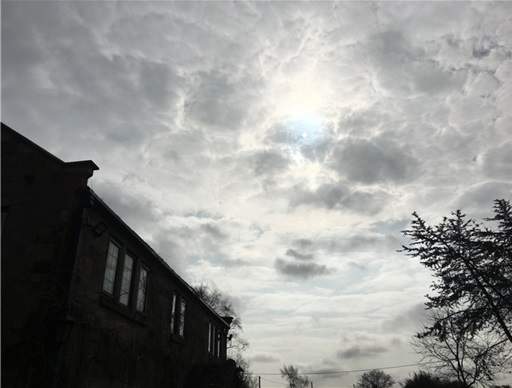
Consider the direction your wall or support structure faces when growing climbers
3) Size and Hardiness
- Look for climbing plants with an eventual height and spread not too dissimilar to the space you have available. Be particularly wary of using large-growing, vigorous varieties in smaller spaces or growing them through mature shrubs or trees that may not be sufficiently strong to hold their weight when fully grown.
- Avoid planting tender climbers in more exposed situations.

Recommended Climbing plants for north and east-facing walls
Akebia quinata (Chocolate Vine)
Chaenomeles x superba (Japanese Quince)
Hydrangea petiolaris (Climbing Hydrangea)
Lonicera japonica 'Halliana' (Honeysuckle)
Lonicera periclymenum 'Serotina' (Late Dutch Honeysuckle)
Lonicera x tellmanniana (Tellman's Honeysuckle)
Mahonia x media 'Charity' (Oregon Grape)
Parthenocissus tricuspidata (Virginia Creeper)
Recommended Climbing plants for south and west-facing walls
Actinidia deliciosa (Kiwifruit)
Humulus lupulus 'Golden Tassels'
Trachelospermum (Star Jasmine)
Share this page:

